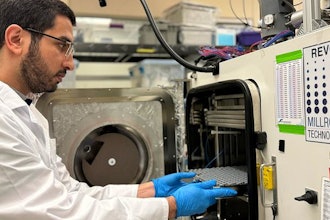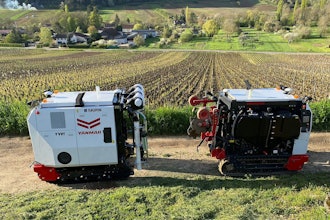
SAN JOSE, Calif. — ZAG Technical Services, an award-winning IT consulting firm and security provider, announced the release of “How Technology Will Change the Food Industry in 2024 and Beyond”, an informational whitepaper outlining the many ways technology plays a vital role in shaping food industry workflows, today and beyond.
Food and agriculture have always used technology to advance production. Today, the pace of technological change is being driven by new business demands stretching from labor and water shortages to increased ESG realities and global reaching policy and market realities. Companies looking to thrive and grow are increasingly turning to technology, in and out of the field, to increase their efficiency and improve their competitive advantage.
As the whitepaper indicates, investments in technology can lend to business growth while alleviating some physically demanding, labor intensive and repetitive tasks. Investment in data systems can provide business opportunities to accelerate business growth, while also upskilling and optimizing the existing labor force.
“As the food industry reflects on their opportunities to grow, it is important for them to see the value of technology and data as a tool for providing competitive advantage,” said Thuan Ngo, vice president of data and software services for ZAG. “The reality is, companies that are growing have leaders that recognize the value of their data and its power to help them not just compete, but outperform and outpace the competition.”
The digital era is actively advancing agriculture, and the food and beverage industries thanks to new developments in artificial intelligence and enhanced automation. Quality and safety remain a priority and the rapid evolution of AI technology is yielding improvements in areas of waste, maintenance, food safety, production planning and customer intelligence. With technology lending a hand to monotonous tasks, growers, processors, shippers, and retailers are recognizing time and labor savings and the ability to focus on more strategic and organizational initiatives.
With the use of IoT becoming more common, the data generated by these devices is becoming an untapped asset in many businesses. Predictive analytics and real-time reporting have been instrumental in achieving business growth throughout the supply chain. Remote process automation and enhanced workflow objectives provide more opportunities to streamline work and make organizational improvements for company growth.
“Looking ahead, it is imperative that our industry recognizes that technology is the new farming input,” said Greg Gatzke, president of ZAG. “Technology enables our teams to deliver more value and when used in tandem with the application of strategic data insights, we can transform how people conduct business and create opportunities for a competitive advantage.”
For more information about how technology is changing the agriculture industry and supply chain, access the whitepaper, “How Technology Will Change the Food Industry in 2024 and Beyond,” here.






















